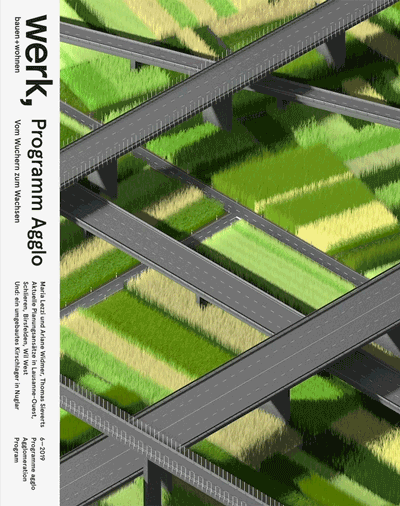werk, bauen + wohnen 6–2019

The Art of Riding the Tiger
Nowhere else is Switzerland growing and changing as rapidly as in the agglomerations on the outskirts of the large cities. Whether in the Arc Lémanique, the Limmattal, the axis Zug–Lucerne or along the Birs near Basel: suburbs that were once largely rural or industrial in character are increasingly acquiring an urban profile. The main motor of this development has been the transformation of former industrial, warehouse and railway sites into quarters with an urban density and mix of functions. But now a change of paradigms in the field of planning is emerging: instead of round-ing off sites, the focus is now on the far more complex adaptation of the existing fabric, on increasing the density of existing quarters, developing centres and residential areas — places where a number of different interests and property boundaries meet. Under the spatial planning dictate of inward settlement development, planning today is always focussed on those places where something already exists. This requires planning that is better coordinated and the population must be allowed to have its say; the result is that planning becomes more complex than before. In the process one thing becomes clear: it is public space that deter-mines the quality of the development — and not individual building projects.
Since 2006 attractive subsidies from the Federal agglomeration programs have contributed to ensuring that the real estate boom in the agglomerations is directed along well-ordered paths, to strengthening non-motorised and public transport, and to securing open spaces. For today such subsidies insist on a joint approach to the planning of traffic roads and settlement areas. Above all they have created a previously unimaginable willingness to cooperate, plan and solve problems in a way that extends across community — and even canton — boundaries: in the west of Wil as well as in the west of Zurich or the west of Lausanne. By themselves individual communities are unable to deal with traffic problems or with opening up the recreation space that is so urgently needed in densely planned areas. Consequently, the edges and boundaries that were previously neglected are becoming a central focus of interest. Where the aim is to create living space of real quality it is not only political boundaries that are under discussion, but — as suggested by several authors in this issue — increasingly plot and property boundaries, too. — Daniel Kurz, Roland Züger